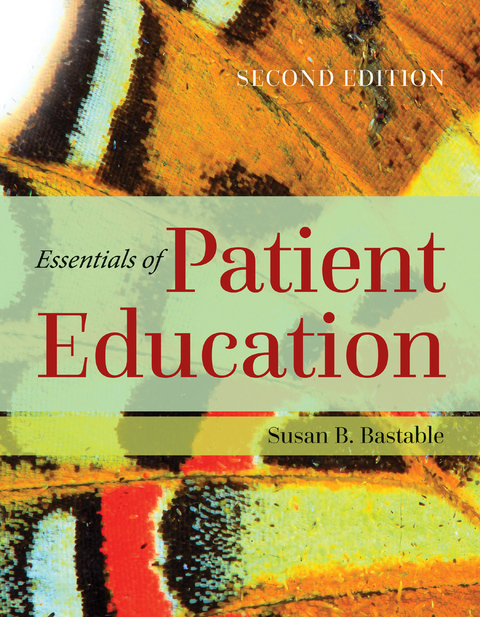Description
Efnisyfirlit
- Cover Page
- Title Page
- Copyright Page
- Dedication
- Contents
- Preface
- Contributors
- Acknowledgments
- About the Author
- PART I Perspectives on Teaching and Learning
- 1 Overview of Education in Health Care
- Historical Foundations for Patient Education in Health Care
- The Evolution of the Teaching Role of Nurses
- Social, Economic, and Political Trends Affecting Health Care
- Purposes, Goals, and Benefits of Patient Education
- The Education Process Defined
- The Contemporary Teaching Role of the Nurse
- Barriers to Teaching and Obstacles to Learning
- Questions to Be Asked About Teaching and Learning
- Summary
- Review Questions
- References
- 2 Ethical, Legal, and Economic Foundations of the Educational Process
- A View of Ethics, Morality, and the Law
- Evolution of Ethical and Legal Principles in Health Care
- Application of Ethical Principles to Patient Education
- Ethics of the Patient-Provider Relationship in Practice Settings
- The Patient’s Right to Education and Information
- Legal and Financial Implications to Documentation
- Economic Factors in Healthcare Education
- Financial Terminology
- Program Planning and Implementation
- Summary
- Review Questions
- References
- 3 Applying Learning Theories to Healthcare Practice
- Psychological Learning Theories
- Applying Learning Theories to Health Care
- Motor Learning
- Common Principles of Learning
- Summary
- Review Questions
- References
- PART II Characteristics of the Learner
- 4 Determinants of Learning
- The Nurse’s Role as Teacher
- Assessment of the Learner
- Assessing Learning Needs
- Methods to Assess Learning Needs
- Readiness to Learn
- Learning Styles, Personality Types, and Intelligences
- Interpretation of Learning Style Models, Personality Types, and Intelligences
- Summary
- Review Questions
- References
- 5 Developmental Stages of the Learner
- Developmental Characteristics
- The Developmental Stages of Childhood
- The Developmental Stages of Adulthood
- The Role of the Family in Patient Education
- Summary
- Review Questions
- References
- 6 Health Behaviors of the Learner
- Compliance and Adherence
- Motivation
- Selected Models and Theories
- Summary
- Review Questions
- References
- 7 Literacy in the Adult Patient Population
- Definition of Terms
- Scope and Incidence of the Problem
- Trends Associated with Literacy Problems
- Those at Risk
- Myths, Stereotypes, and Assumptions
- Assessment: Clues to Look for
- Impact of Illiteracy on Motivation and Compliance
- Ethical, Financial, and Legal Concerns
- Readability of PEMs
- Methods to Measure Literacy Levels of PEMs
- Tests to Measure Comprehension of PEMs
- Tests to Measure General Reading Skills and Health Literacy Skills of Patients
- Simplifying the Readability of PEMs
- Strategies to Promote Health Literacy
- Summary
- Review Questions
- References
- Appendix 7-A: Tests to Measure Readability and Comprehension and Tools to Assess Instructional Materials
- 8 Gender, Socioeconomic, and Cultural Attributes of the Learner
- Gender Characteristics
- Socioeconomic Characteristics
- Cultural Characteristics
- Assessment Models for the Delivery of Culturally Sensitive Care
- The Four Major Subcultural Ethnic Groups
- Preparing Nurses for Diversity Care
- Stereotyping: Identifying the Meaning, the Risks, and the Solutions
- Summary
- Review Questions
- References
- 9 Educating Learners with Disabilities
- Scope of the Problem
- Definition of Terms
- The Language of Disabilities
- The Roles and Responsibilities of Nurses as Patient Educators
- Types of Disabilities
- Sensory Disabilities
- Learning Disabilities
- Developmental Disabilities
- Mental Illness
- Physical Disabilities
- Communication Disorders
- Chronic Illness
- The Family’s Role in Chronic Illness or Disability
- Summary
- Review Questions
- References
- Appendix 9-A: Resources and Organizations for People with Disabilities
- PART III Techniques and Strategies for Teaching and Learning
- 10 Behavioral Objectives and Teaching Plans
- Characteristics of Goals and Objectives
- The Importance of Using Behavioral Objectives
- Writing Behavioral Objectives and Goals
- Common Mistakes When Writing Objectives
- Taxonomy of Objectives According to Learning Domains
- Development of Teaching Plans
- Use of Learning Contracts
- The Concept of Learning Curve
- Summary
- Review Questions
- References
- 11 Teaching Methods and Settings
- Teaching Methods
- Selection of Teaching Methods
- Evaluation of Teaching Methods
- General Principles for Teaching Across Methodologies
- Settings for Teaching
- Summary
- Review Questions
- References
- 12 Instructional Materials
- General Principles
- Choosing Instructional Materials
- The Three Major Components of Instructional Materials
- Types of Instructional Materials
- Evaluating Instructional Materials
- Summary
- Review Questions
- References
- 13 Technology in Patient Education
- Health Education in the Information Age
- The Impact of Technology on the Teacher and the Learner
- Strategies for Using Technology in Healthcare Education
- The Internet
- Issues Related to the Use of Technology
- Summary
- Review Questions
- References
- 14 Evaluation in Healthcare Education
- Evaluation, Evidence-Based Practice, and Practice-Based Evidence
- Evaluation Versus Assessment
- Evaluation Models
- Designing the Evaluation
- Conducting the Evaluation
- Analyzing and Interpreting Data Collected
- Reporting Evaluation Results
- Summary
- Review Questions
- References
- Glossary
- Index






Reviews
There are no reviews yet.